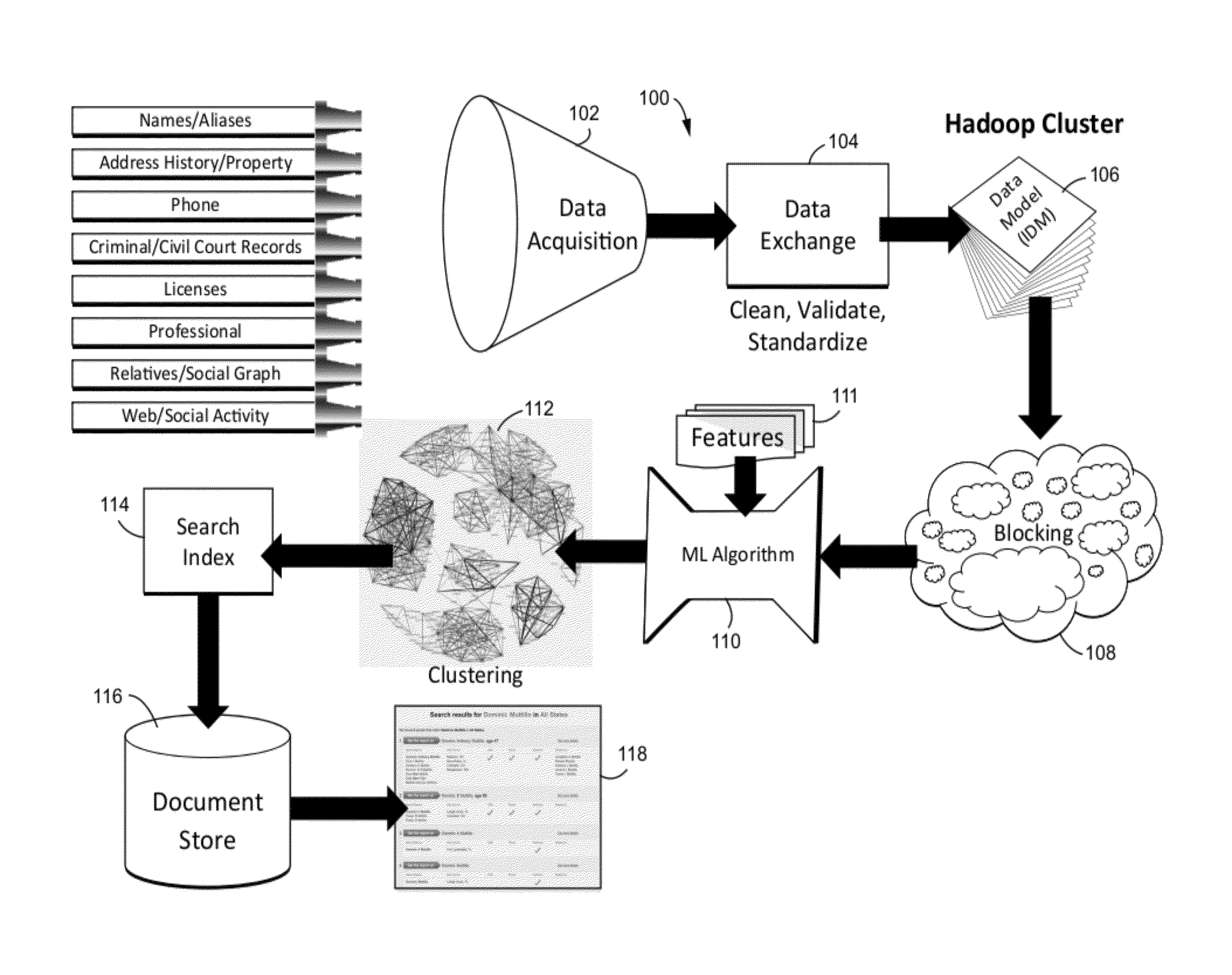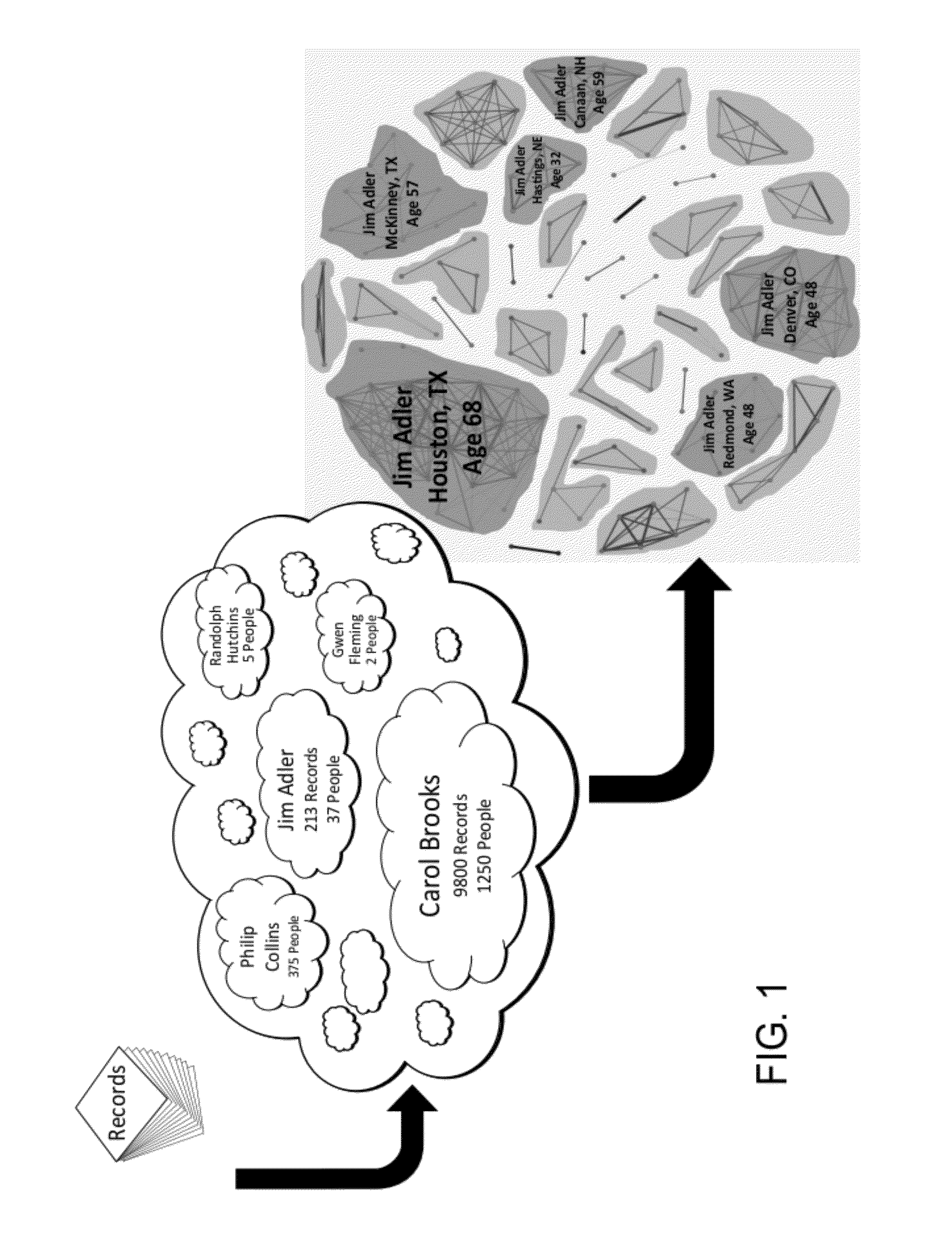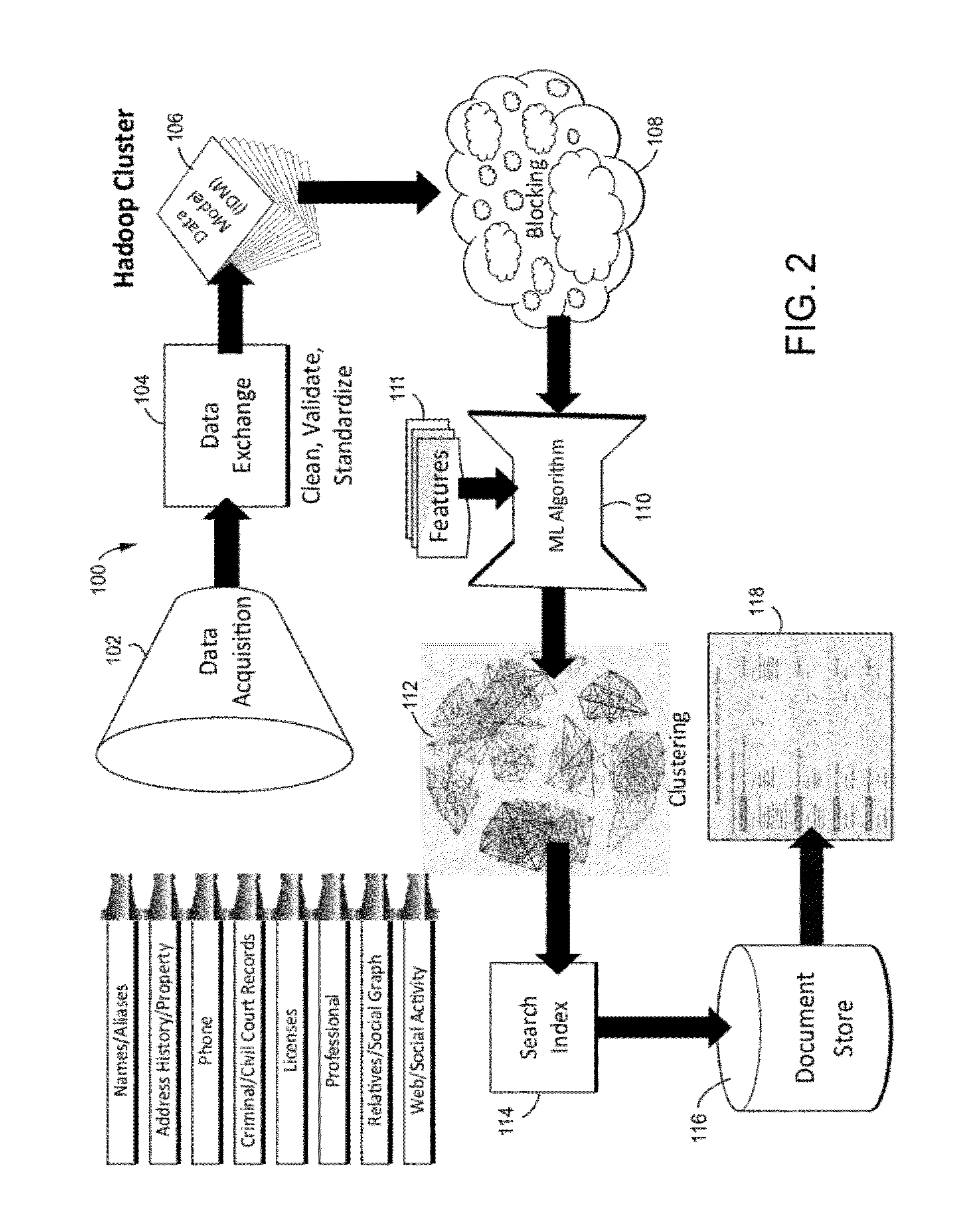Cost-sensitive alternating decision trees for record linkage
a decision tree and record technology, applied in the field of databases and record linkage, can solve the problems of duplicate records having many deleterious effects, unable to accurately link such records without making mistakes, and destroying the confidence of the information source,
- Summary
- Abstract
- Description
- Claims
- Application Information
AI Technical Summary
Benefits of technology
Problems solved by technology
Method used
Image
Examples
example machine learning
Algorithms
[0058]FIG. 7 shows an example non-limiting comparison of different machine learning and record linkage techniques, and FIG. 8 shows an example alternating decision tree and conventional decision tree. ADTrees were described by Freund and Mason, The Alternating Decision Tree Learning Algorithm, Proceedings of the 16th International Conference on Machine Learning, 124-133 (1999). They can be characterized as “Decision Trees meet Boosting”. A standard boosting algorithm is used, but all features learned are of a certain form. There are two kinds of nodes in illustrative implementations: splitter nodes and prediction nodes. This does not provide binary splits like with a DT−one can have multiple splitter nodes (multiple questions) hanging off of each prediction node. Note that decision trees and alternating decision trees provide good human interpretability, capture feature interactions and handle diverse feature types. However, they do not provide cost sensitivity. On the oth...
PUM
 Login to View More
Login to View More Abstract
Description
Claims
Application Information
 Login to View More
Login to View More - R&D
- Intellectual Property
- Life Sciences
- Materials
- Tech Scout
- Unparalleled Data Quality
- Higher Quality Content
- 60% Fewer Hallucinations
Browse by: Latest US Patents, China's latest patents, Technical Efficacy Thesaurus, Application Domain, Technology Topic, Popular Technical Reports.
© 2025 PatSnap. All rights reserved.Legal|Privacy policy|Modern Slavery Act Transparency Statement|Sitemap|About US| Contact US: help@patsnap.com



